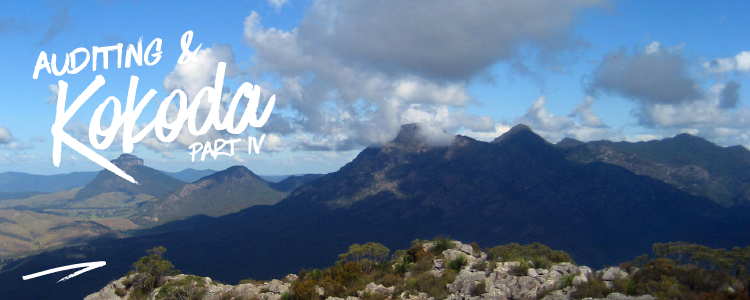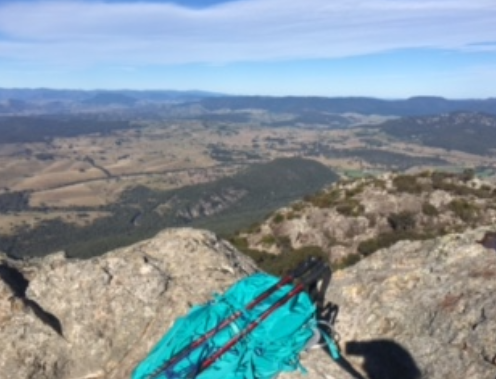
How auditing is preparing me for the Kokoda Trail Part #4
How auditing is preparing me for the Kokoda Trail - Part #4
Well, this is my final article before I leave for Kokoda – actually by the time you are reading this I will be out there in the jungle somewhere!
On one of our recent training hikes we discovered the beautiful Mt Maroon, which is part of the McPherson Range west of Rathdowney in South East Qld. This was actually more of a rock climb than a hike though and certainly was a great training session for my mental state in preparation for Kokoda. It was definitely worth the climb for this view though.

At the entrance/exit to the National Park we came across a Pathogen hygiene station and of course I instantly thought of ISO 14001:2015 and the requirement in Clause 6.1.2 Environmental Aspects where it states that the organization shall determine the environmental aspects of its activities, products and services that it can control and those that it can influence, and their associated environmental impacts, considering a life cycle perspective. The organization shall determine those aspects that have or can have a significant environmental impact.
Obviously as part of the management of the national park the potential to spread pathogens and weeds had been identified and more-than-likely as having a significant impact.
This process is about identifying any activities that have the potential to spread pathogens and/or weeds. This might be through people and vehicles moving through the infected areas.
The significant impacts are to be identified using ‘established criteria’ which may be some form of risk assessment. The criteria used might include the Likelihood and Impact to determine a final risk rating.
 Once the significant impacts are identified ISO 14001:2015 requires an organization to do something about it which is Clause 6.1.4 Planning action where it states the organization shall plan to take actions to address its significant environmental aspects, compliance obligations and its risks and opportunities. These actions are to be integrated and implemented into the organizations environmental management system processes or other business processes.
Once the significant impacts are identified ISO 14001:2015 requires an organization to do something about it which is Clause 6.1.4 Planning action where it states the organization shall plan to take actions to address its significant environmental aspects, compliance obligations and its risks and opportunities. These actions are to be integrated and implemented into the organizations environmental management system processes or other business processes.
Once these plans are in place we can then move to the core operational clause of the standard to plan and manage our actions.
Clause 8.1 Operational planning and control states that the organization shall establish, implement, control and maintain the processes needed to meet environmental management system requirements, and to implement the actions identified in 6.1 and 6.2.
This clause goes on to talk about that controls can include engineering controls and procedures. Controls can be implemented following a hierarchy (e.g. Elimination, substitution, administrative) and can be used individually or in combination.

What level of control have National Parks used with the provision of the hygiene station? I welcome your comments and any other controls you could suggest or have implemented.
The outputs from clause 6.1.2 Environmental aspects forms the core direction of an organizations environmental management system (EMS), from setting objectives, support and resources, operational control and performance evaluation. I always say in my training rooms that the word SIGNIFICANT is the stand out key-driver and unique element of ISO 14001 and directs any other activity throughout the environmental management system.
I am so looking forward to my journey to PNG and the Kokoda trail and I look forward to sharing my updates from my journey with all of you. I wonder how many exciting ISO wonders of the world I will see out there! Catch you when I’m out of the jungle!





